
;
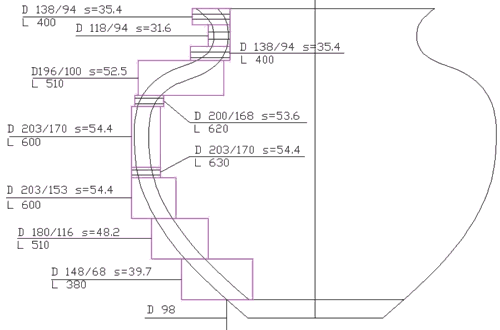 This bowl is a segmented turning, made of several hundreds pieces of wood
of different species.
This bowl is a segmented turning, made of several hundreds pieces of wood
of different species.
First I draw the shape with intended wall thickness, 5 or 6 mm. Then ring diameters are drawn with some margin for roundness and position errors. The segments lengths are calculated from the drawing.
Segment lengths (outside edge) are calculated:
segment length = outer diameter * 3.14 / number of segments.
This bowl has 12 segments /ring so segment length for 200 mm diameter will be:
200 * 3.14 / 12 = 53.6 mm
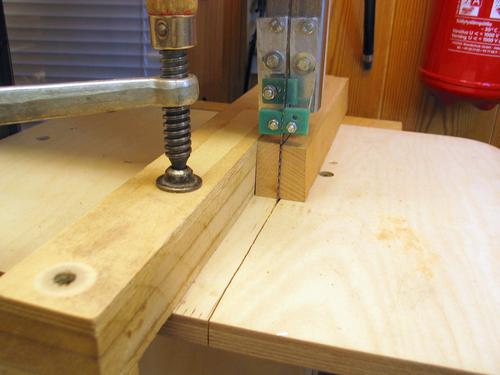
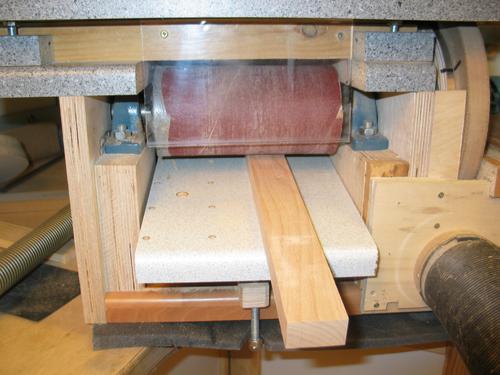
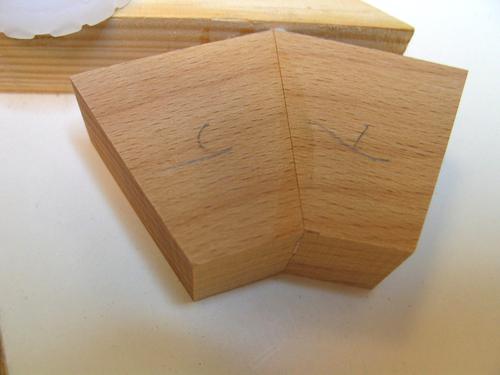
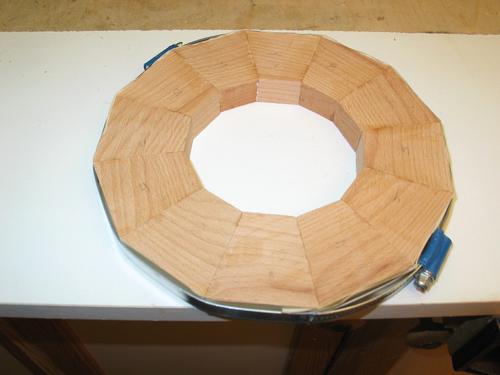
The segment's miter angle must be very accurate so that the pieces will form a
full circle. Segments are glued with PVA wood glue. One method is to glue
two pieces together (end grain against end grain) then pairs are
glued together and so on. Another method, if you have cut the pieces very
accurately, is to glue all pieces at the same time, clamping the ring
together with a hose clamp.
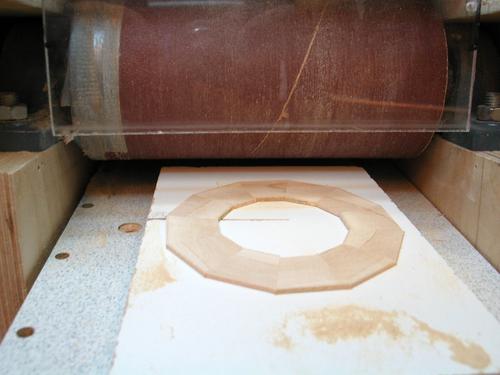
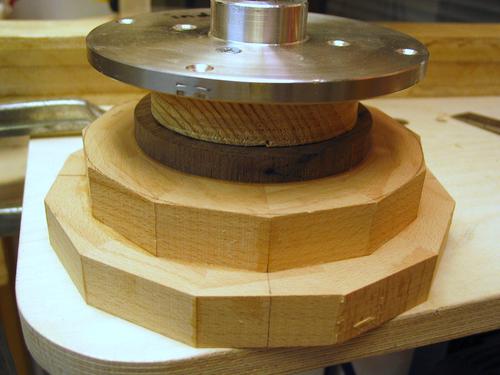
After the glue is dry the rings can be thickness sanded. The first ring is glued to
a solid wood disk on a lathe face plate. Then the next ring is glued to the first ring,
carefully centered and "brick layed" as above right photo. With
the brick lay pattern we get a very strong construction.
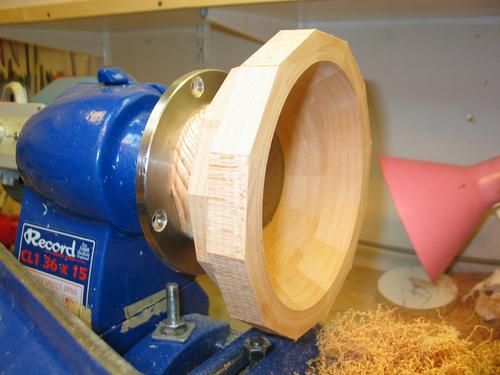
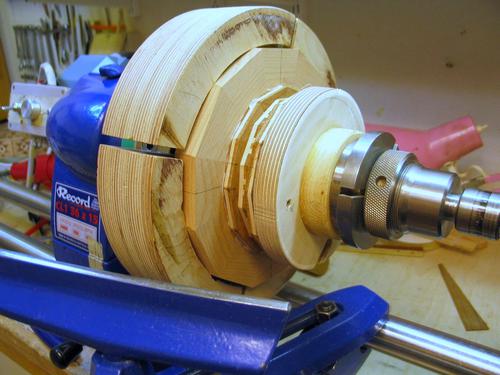
After some rings are glued it is easy to turn the inside to rough shape,
but not from the outside, because of stability. The lathe makes for a very effective
gluing clamp, pressing the rings together with the tailstock.
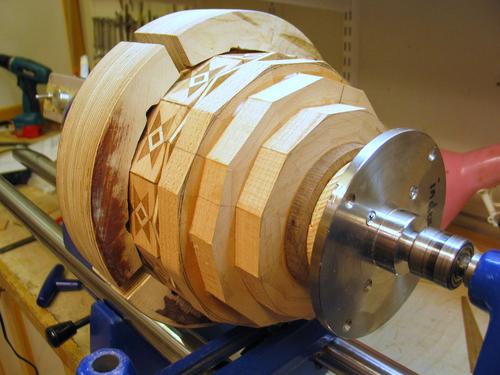
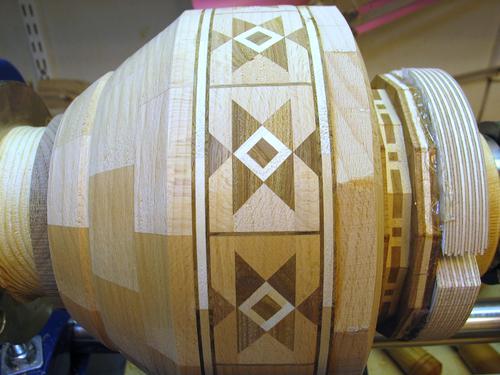
The "feature" ring has been added and top part is glued to another face plate.
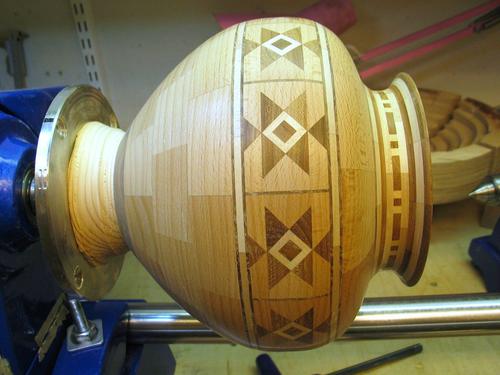
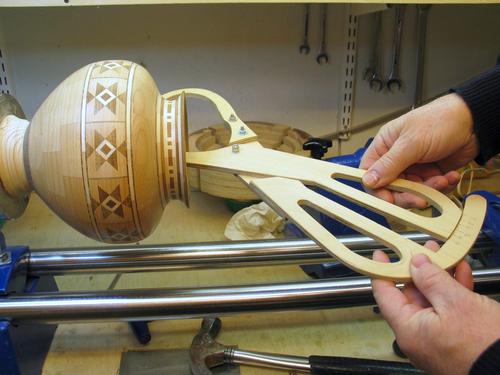
Inside and outside are turned to final shape. I measure the wall thickness
with a homemade tool.
Then the bowl is sanded with several grits and finished with several applications of Danish Oil.
After the oil is dry (next morning) the bowl is buffed with paper towel while the lathe is running.
Lastly the bowl is cut from the face plate with a parting tool, then the bottom is finished.
This is only a short description of segmented turning, there are excellent books and videos and if you are interested search the Web for "Segmented Woodturning".
Pekka Svinhufvud
Next: Making a segmented turning sailboat pattern
See also:
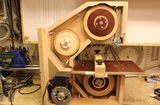 Pekka's bandsaw
Pekka's bandsaw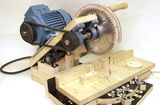 Pekka's homemade
Pekka's homemade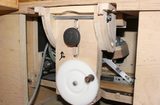 Pekka's tilting router lift
Pekka's tilting router lift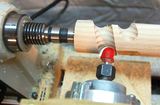 Brian Kerr's router lathe
Brian Kerr's router lathe